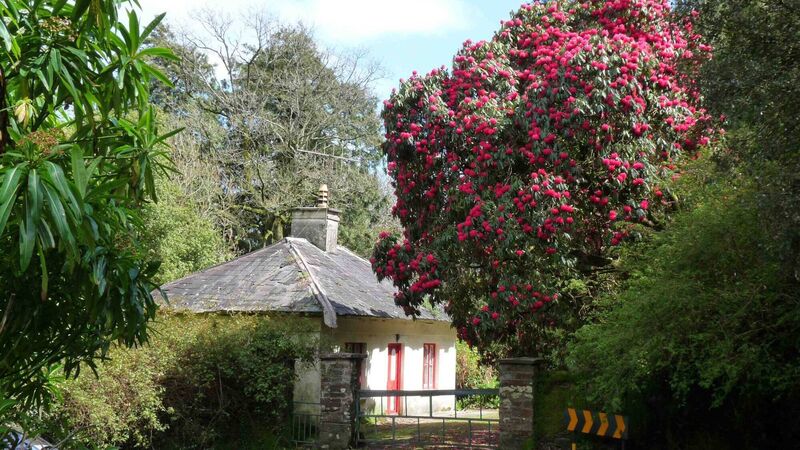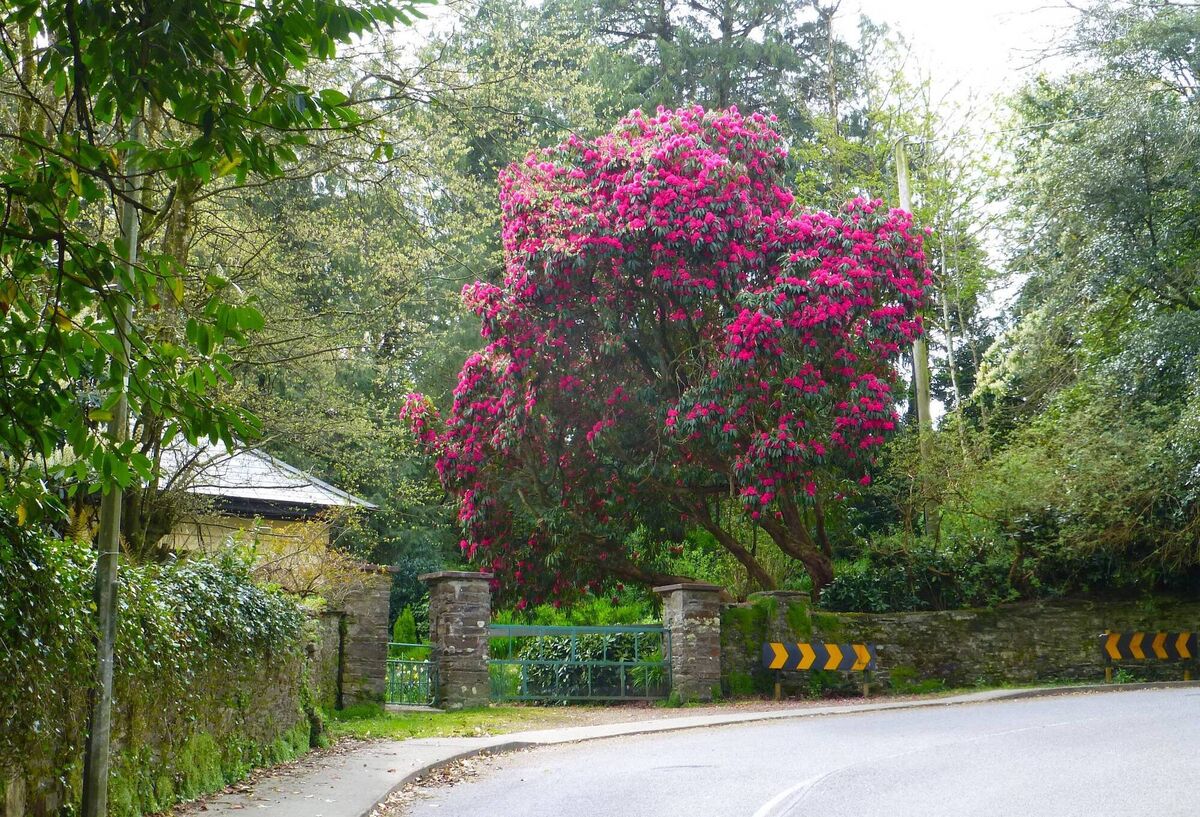Damien Enright: What caused the fall of a mighty 110-year-old rhododendron tree?

Said to have been sown in 1911, this rhododendron withstood all the skies could throw at it until now.
Emails from West Cork informed me of the devastation visited on my local woods by storms Dudley, Eunice and Franklin; this is the second or third time in half a dozen years when stands of waxy-leaved myrtles, with their red bark and fat, blackberries which in autumn provide feasts for blackbirds were laid low. They were a sad sight. It's no wonder aggressive winds are depicted in classical paintings as evil-looking, goateed men with horns and bearing tritons blasting their way through storm-blown clouds to wreak havoc on the farms and forests. What damage winds can do, brooking no obstacles in their path!
One of the casualties of 'our' village was a showpiece rhododendron standing thirty feet tall on a dog's-leg corner overlooking a pretty gate-lodge cottage at the entrance to an old estate. This was not Rhododendron ponticum, the invasive species that has rendered thousands of acres of Irish woodland impassable.
As sure as God made little apples (of which there are hundreds left to rot every year in the now inaccessible jungle orchards of that estate) every springtime it bloomed in countless, bright red blossoms bigger than a human hand. When the flowers died, a carpet of red petals covered the pavement beneath. The tree was a jaw-dropping sight for visitors, for where else might they see a mountain of red flowers dwarfing a cottage alongside it?
In the woods of Cork and Kerry, chainsaws snarled amongst the corpses of forest giants everywhere, pitiful sounds to hear and events to witness – but that is nature, folk so wisely say, red in tooth and claw, albeit wind has no shape or substance, and they wag their heads in sadness for the loss. One cannot call it grief, because they were, after all, only trees, howsoever much they inhale carbon and exhale oxygen.

Was it nature alone that toppled the rhododendron or recent interventions authored by ourselves? The tree was 110 years old, so said the man in the cottage: in 1911, his grandmother had set the sapling in the ground. For half its life, it was tall enough to catch - but withstand – the full force of the southwest gales that blew up the rising road from the sea. Perhaps the oaks, ash trees and beeches that grew on both sides quelled the wind's force, but in the last ten or fifteen years many of these have been cut down.
Heartbreak will have visited some village gardens on which hours were, every year, invested in the love and care of shrubs and trees. While again being 'only vegetation, they were precious to their owners for their looks, or their shade, or their fruits. It's mysterious how humans can become so attached to plants. Some, like peyote cactus and psilocybin mushrooms are, of course, mind-altering and have been held as sacred for their properties, some are naturally addictive, like khat. Indeed, the plain potato, originally from the Andes, was not just life-enhancing but life-giving to us Irish; without it we might all have starved or all be in Australia. It was the venerable spud, of course, that saved us before the Famine, but then was blighted and left us starving, no fault of its own.
On a brighter note, I must turn to the phenomenon of spuds on this island in the sun – where, lately, due to dust storms from Africa, to see the sun or even the vast cliffs above the valley it has been impossible day after day. Ironically, deluges in the last 48 hours have left us shivering in our 1960s rented house, tiled on both lower and upper floors so as to be cool in summer but becomes an icebox when wild rain batters the doors and shutters, and the thick stone walls go cold.
Yes, the islands of the Canaries were swept by storms too – but it was heartening to see the fields that were flooded for planting potatoes only two months ago are now so carpeted in green haulms that not a weed is visible and bright, white flowers bloom.





